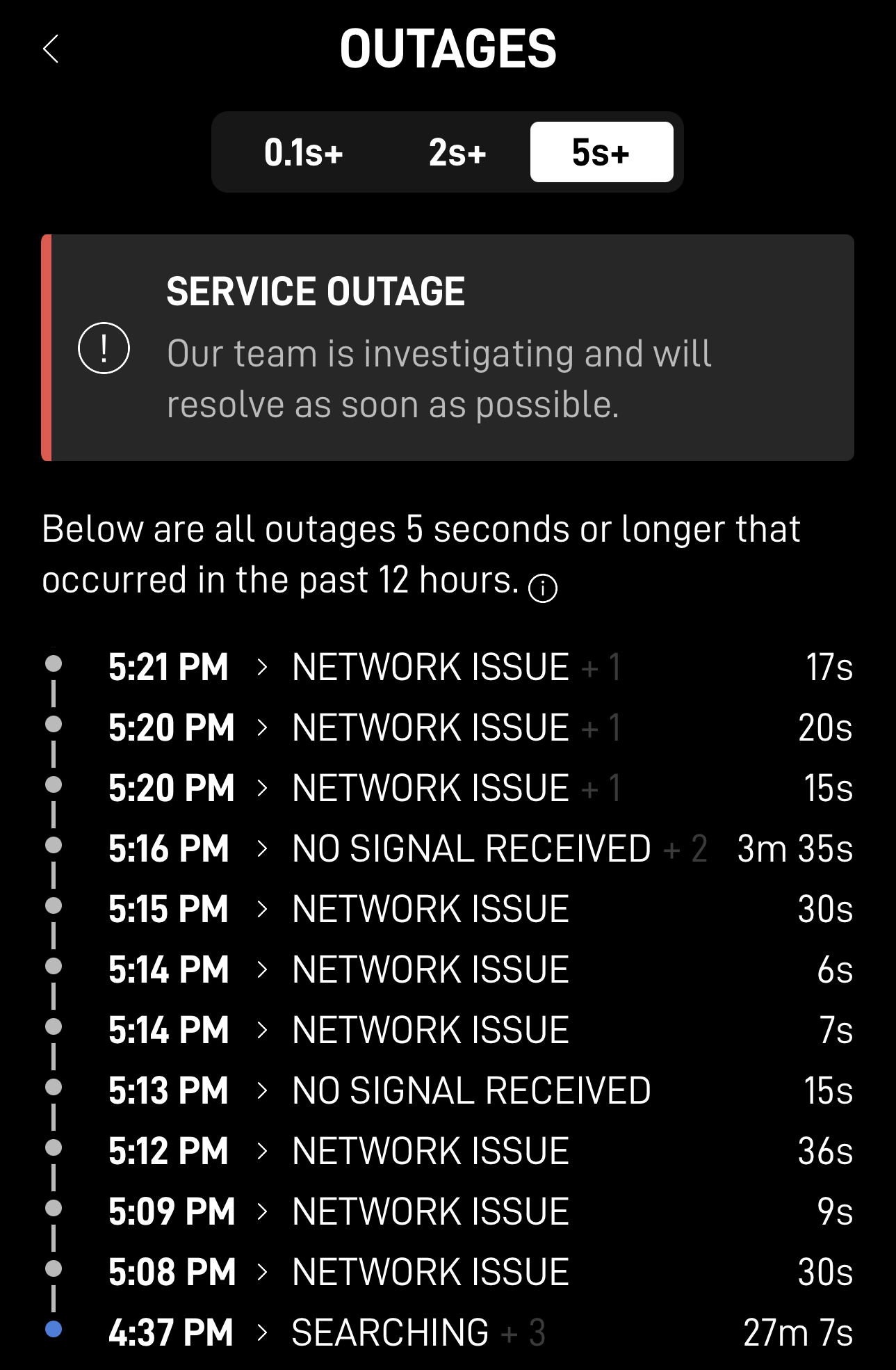
The world of satellite-based internet services has been utterly transformed by the introduction of Starlink, an innovation by SpaceX. With the ambitious goal of providing high-speed internet connectivity to remote and underserved regions across the globe, Starlink has garnered both praise and skepticism. Drawing from our team’s experience and customer feedback, this article provides a comprehensive perspective on Starlink’s performance, highlighting its strengths and offering insights into its potential challenges.
Leveraging the Starlink App
Prospective users have the advantage of utilizing the Starlink app to optimize their installation site. By leveraging the app’s capability to scan the sky for obstructions using the device’s camera, users can make informed decisions about their setup. The app provides recommendations on whether to continue with the current location or explore alternatives, facilitating the best possible connectivity.
Starlink Obstructions: Navigating Rain, Leaves, and More
Starlink’s operation at Ku-Band frequencies, combined with its low Earth orbit architecture, has enabled its success in delivering connectivity through compact satellites and small antennas. Yet, certain environmental factors can impact its performance. Notably, heavy rain can temporarily attenuate Ku-Band frequencies, leading to signal degradation. The severity of the rainstorm plays a pivotal role in determining the extent of this impact.
Obstructions like branches and leaves can also hinder Starlink’s performance. Those residing in heavily vegetated areas should prioritize maintaining a clear line of sight for the satellite dish to mitigate disruptions. While speculation exists about potential interference from planes, no conclusive evidence has been presented thus far.
Starlink Challenges and Considerations
Starlink, like any technology, comes with its share of challenges. Streaming services may encounter variability when used while traveling abroad, underscoring limitations in global coverage. Although streaming often remains viable even with some obstructions, video conferencing, especially on platforms like Zoom, might face intermittent issues.
The orientation of the satellite dish can occasionally become problematic. While the dish typically reorients itself when obstructions appear in its line of sight, isolated instances have been reported where it inadvertently directed itself towards obstructions. This could be due to satellite movement, necessitating users to explore solutions like raising the dish or seeking assistance from Starlink’s customer service.
Moreover, sporadic high packet loss can disrupt real-time applications such as VoIP, online gaming, and video meetings. This emphasizes the fact that Starlink’s performance may not consistently match the reliability of established internet options like fiber or cellular connections.
Starlink Outages and Bonding
While Starlink has made substantial strides in delivering internet access to previously unreachable areas, it’s not immune to occasional outages. These interruptions can undoubtedly frustrate users who rely heavily on the service. To address this, our team has explored the concept of bonding. This approach involves combining multiple internet connections, including Starlink and other alternatives, to enhance overall connectivity reliability. If you find yourself grappling with Starlink outages, reach out to us to discuss the benefits of bonding.

Setting Realistic Expectations
While Starlink has made it more possible to connect across the globe, it’s important to align your expectations with its inherent variability. For occasional users seeking primary internet access in remote areas, Starlink can be an exceptional solution. Especially if the fastest alternative in the area is DSL. However, those requiring unwavering reliability and stability might want to consider a secondary internet service and a bonded connection strategy. This approach would help alleviate potential Starlink-related challenges.
Last Thoughts
As we conclude our exploration of Starlink’s satellite service, it’s essential to consider various scenarios and expectations to determine if this innovative solution is the right fit for you. If you’re transitioning from the confines of rural areas burdened with sluggish DSL or even archaic dial-up connections, Starlink could very well be a game-changer for you. Despite its occasional faults, the leap in speed and accessibility that Starlink brings will likely be a breath of fresh air.
However, the story takes a different turn if you’re accustomed to the seamless streaming and consistent connectivity offered by cable or fiber services. For those who engage in regular streaming sessions, whether it’s your favorite TV shows, movies, or work-related conferences, the relationship with Starlink might be a mix of admiration and frustration.
When embracing Starlink, it’s crucial to understand and factor in its limitations. Rain can impact performance due to the attenuation of Ku-Band frequencies. If your internet usage primarily occurs after 6 PM, it’s important to be prepared for the possibility of encountering slower performance during peak usage times.
Equally paramount is the realization that Starlink’s performance is intimately tied to your geographical location. Factors such as obstructions, vegetation, and terrain play a pivotal role in determining the quality of your connection.
Furthermore, an important aspect to keep in mind is Starlink’s support structure. Unlike conventional customer service where a phone call can swiftly address your concerns, Starlink’s support operates through the app’s messaging feature. As such, seeking assistance involves sending messages within the app, a process that might require some adjustment for those accustomed to direct phone support.
Navigating the Starlink journey can be greatly facilitated by tapping into the wealth of knowledge within the user forums and communities. Before taking the plunge, we strongly encourage you to conduct thorough research by exploring these platforms. They offer insights, experiences, and solutions shared by fellow users, allowing you to make an informed decision that aligns with your unique needs and expectations.
In summation, Starlink’s satellite service presents a transformative opportunity for those seeking enhanced connectivity, especially in rural or underserved areas. For some, the transition will be seamless, while for others, it may require a level of adaptability and understanding. By comprehensively evaluating your usage patterns, geographic location, and support expectations, you can navigate the Starlink landscape with clarity and confidence.



